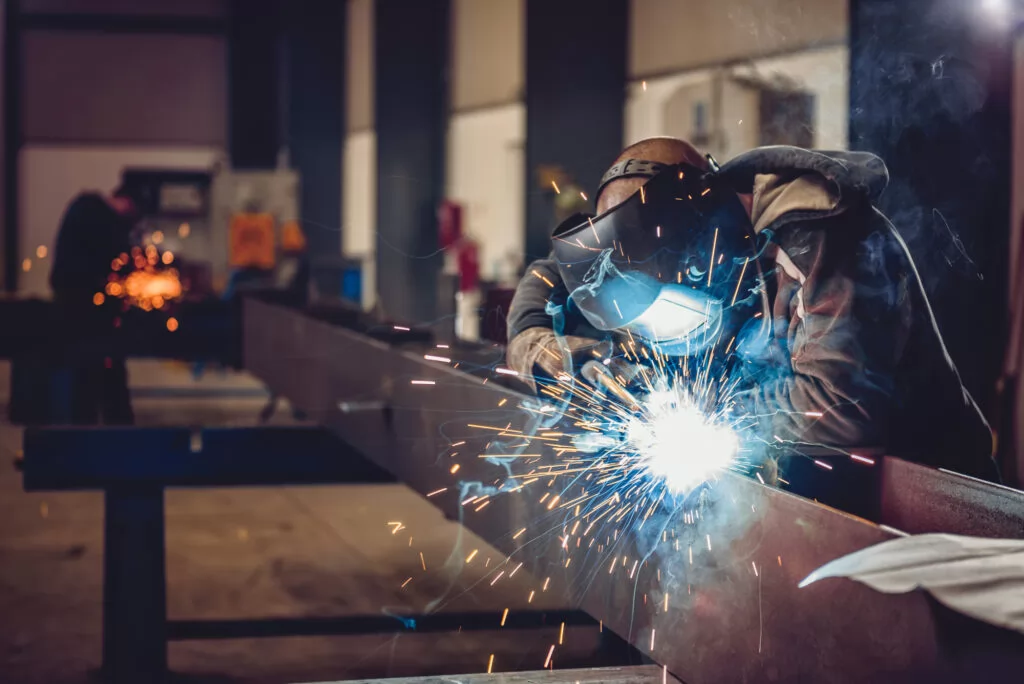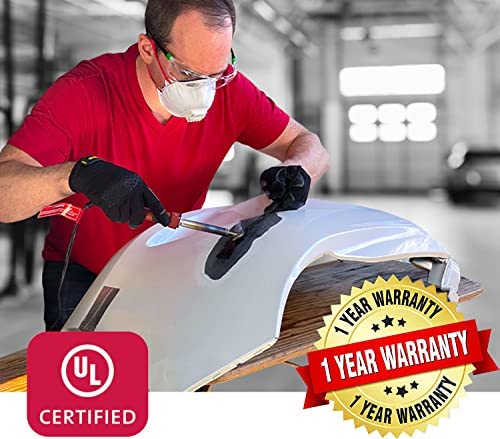Usual Welding Repair Work Issues and Exactly How to Address Them Effectively
Welding fixings typically come across a variety of concerns that can jeopardize the integrity of the end product. Common problems consist of insufficient penetration, porosity, and imbalance, among others. Each issue presents one-of-a-kind obstacles that need details methods for resolution. Recognizing these concerns is important for welders intending to boost their end results and abilities. This discussion will certainly explore these common welding repair service problems and efficient techniques to resolve them.
Inadequate Penetration
Insufficient penetration occurs when the weld steel falls short to fully fuse with the base product, causing weak joints and prospective structural failings. This problem often stems from insufficient warm input, inaccurate electrode angle, or inappropriate welding speed. Welders might experience poor infiltration because of a mistake of the essential criteria for a specific product thickness or type. Additionally, contamination on the base product's surface area can hinder reliable bonding, aggravating the issue. To address insufficient infiltration, welders should ensure appropriate setups on their tools and maintain a clean work surface area. Regular examination of welds is suggested to identify any type of shortages early, enabling for timely improvements and the avoidance of compromised architectural stability in bonded assemblies.
Porosity
Porosity is a common flaw in bonded joints that manifests as little gas bubbles caught within the weld metal. This defect can compromise the integrity of the weld, leading to lowered stamina and possible failure under anxiety. Montana Mobile Welding and Repair Belgrade. Porosity generally occurs from contamination, moisture, or incorrect welding strategies, which enable gases to get away right into the molten weld swimming pool. To attend to porosity, welders need to ensure appropriate surface preparation, maintain a tidy functioning atmosphere, and utilize suitable welding parameters. In addition, picking the ideal filler material and shielding gas can reduce gas entrapment. Normal assessment and testing of welds can assist recognize porosity early, assuring prompt corrective actions are taken, thus protecting the high quality and reliability of the bonded structure
Imbalance
Misalignment in welding can occur from various aspects, consisting of inappropriate configuration and thermal expansion. Understanding the origin is important for effective resolution. Numerous improvement strategies are offered to realign parts and ensure architectural stability.
Causes of Imbalance
Welding imbalance usually stems from a range of underlying issues that can jeopardize structural honesty. One main reason is incorrect fit-up of elements before welding, which can cause voids and unequal surface areas. Variations in thermal expansion throughout the welding procedure can also lead to distortion, especially if the materials being signed up with have different coefficients of expansion. Furthermore, inadequate clamping and fixturing might fail to hold elements securely in place, causing movement during welding. Badly kept devices, consisting of welding devices and devices, may present incongruities in the weld bead, further adding to imbalance. Driver error, stemming from insufficient training or experience, can additionally play a significant duty in developing misaligned welds.

Improvement Strategies Available
Dealing with misalignment effectively calls for a mix of restorative strategies customized to the certain issues at hand. One common technique is making use of fixtures or jigs to hold components in the appropriate position during welding, guaranteeing constant alignment. In addition, pre-heating the products can help in reducing distortion and boost fit-up. For substantial imbalance, mechanical adjustment methods, such as making use of hydraulic jacks or clamps, can be employed to remedy the position before welding. Post-weld warmth treatment might also be required to relieve tensions brought on by imbalance. Careful inspection and modification throughout the arrangement phase can prevent misalignment issues from ending up being substantial problems, promoting a smoother welding process and boosting overall structural stability.
Distortion
Distortion is an usual obstacle in welding that can arise from various aspects, consisting of irregular heating & cooling. Understanding the sources of distortion is important for executing efficient avoidance strategies. Resolving this concern not just boosts structural stability however also improves the total quality of the weld.
Reasons for Distortion
When subjected to the intense heat of welding, materials frequently undergo modifications that can cause distortion. This phenomenon largely develops from thermal expansion and contraction throughout the welding procedure. As the weld area warms up, the material increases; upon air conditioning, it gets, which can develop internal tensions. On top of that, irregular heating throughout a work surface can exacerbate these tensions, resulting in bending or flexing. The sort of material likewise plays a significant role; metals with differing thermal conductivity and coefficients of expansion might respond differently, bring about unpredictable distortions. Moreover, bad joint layout and inadequate fixturing can add to misalignment during welding, raising the likelihood of distortion. Comprehending these reasons is important for reliable welding repair service and prevention approaches.
Prevention Techniques
Reliable prevention methods for distortion during welding emphasis on managing warmth input and guaranteeing proper joint layout. Maintaining a consistent warm input assists to decrease thermal growth and tightening, which can result in distortion. Utilizing strategies such as pre-heating the work surface can likewise reduce the temperature slope, advertising consistent home heating. Additionally, choosing appropriate joint designs, such as T-joints or lap joints, can boost security and lower stress concentrations. Implementing proper fixturing to protect the work surfaces in location better aids in maintaining placement during the welding process. Staggered welding series can disperse warmth more uniformly, preventing localized distortion. By applying these approaches, welders can greatly lower the probability of distortion and boost the general quality of their welds.
Splitting
Cracking is an usual concern encountered in welding repair work, typically resulting from numerous factors such as inappropriate cooling prices, product option, or inadequate joint preparation. The incident of fractures can greatly jeopardize the honesty of the weld, causing potential failings during procedure. To address this issue, welders must first assess the source, making certain that products work and appropriately chosen for the particular application. In addition, regulating the air conditioning price throughout the welding process is vital; rapid air conditioning can cause stress and anxiety and cause splitting. Correct joint design and prep work additionally add to reducing the danger. Implementing these strategies can enhance weld quality and longevity, eventually lowering the possibility of splitting in ended up weldments.

Insufficient Fusion
A significant issue in welding repair work is incomplete fusion, which occurs when the weld metal does not properly bond with the base product or previous weld passes - Belgrade. This problem can bring about weak points in the joint, potentially endangering the stability of the welded structure. Variables adding to incomplete fusion include not enough heat input, incorrect welding strategy, and contamination of the surfaces being signed up with. To address this concern properly, welders must guarantee proper pre-weld cleaning and surface area prep work, along with adjust their welding criteria to achieve ample penetration and blend. Routine assessment throughout the welding process can additionally help recognize incomplete combination early, allowing for timely restorative actions to enhance the general top quality of the weld
Overheating
While welding repair services can improve structural weblink stability, overheating presents a significant obstacle that can bring about material destruction. Extreme warm during welding can alter the mechanical properties of steels, leading to lowered strength, enhanced brittleness, and bending. This phenomenon is especially vital in high-stress applications where architectural integrity is extremely important. Recognizing overheating can entail aesthetic evaluations for staining or distortion, along with keeping track of temperature during the welding process. To reduce the threats associated with overheating, welders ought to employ proper techniques, such as regulating traveling welder warmth input, readjusting traveling speed, and making use of appropriate filler products. Furthermore, implementing pre- and post-weld warmth therapies can aid bring back product residential properties and improve the overall top quality of the repair work, guaranteeing long-lasting performance and security.
Frequently Asked Concerns
What Are the Common Signs of a Welding Issue?

How Can I Evaluate My Welds for High quality?
To evaluate welds for high quality, one can utilize visual evaluations, ultrasonic screening, and radiographic techniques. Each method guarantees structural integrity, identifies flaws, and confirms adherence to specified standards, eventually enhancing the reliability of the welded joints.
What Safety and security Precautions Should I Take While Welding?
When welding, one must focus on security by using suitable personal safety devices, guaranteeing proper ventilation, protecting combustible products away, keeping a tidy work area, and knowing surroundings to prevent crashes and injuries.
Can I Fix a Weld Without Redesigning the Entire Joint?
Repairing a weld without renovating the whole joint is feasible, relying on the damages (Montana Mobile Welding and Repair). Techniques such as grinding, including filler material, or making use of a welding procedure can effectively resolve details problems while preserving the surrounding framework
What Devices Are Important for Reliable Welding Fixes?
Necessary tools for efficient welding repair work consist of a welding machine, cable brush, mill, protective gear, clamps, and filler materials. Each tool plays a vital role in making sure top quality and security throughout the repair service procedure. Porosity generally emerges from contamination, dampness, or incorrect welding strategies, which allow gases to get away right into view publisher site the molten weld swimming pool. Poorly conserved equipment, including welding machines and tools, might present inconsistencies in the weld bead, additional adding to misalignment. When subjected to the intense heat of welding, materials often go through changes that can lead to distortion. Breaking is a common problem run into in welding repair work, commonly resulting from numerous factors such as incorrect air conditioning rates, product choice, or insufficient joint prep work. A substantial issue in welding repair work is incomplete fusion, which occurs when the weld steel does not sufficiently bond with the base product or previous weld passes.